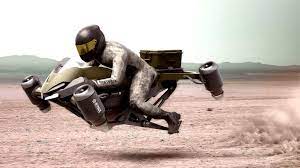
Breaking News
 2025 Annual Shareholder Meeting | Tesla
2025 Annual Shareholder Meeting | Tesla
 Tesla, Google, Nvidia and Starcloud in a AI Space Race. Tesla Future Chips, SpaceX Starship are Key
Tesla, Google, Nvidia and Starcloud in a AI Space Race. Tesla Future Chips, SpaceX Starship are Key
 DHS Considering Private Bounty Hunters for Immigration Enforcement
DHS Considering Private Bounty Hunters for Immigration Enforcement
 BREAKING: Supreme Court Allows Trump To Block SNAP Benefits
BREAKING: Supreme Court Allows Trump To Block SNAP Benefits
Top Tech News
 HUGE 32kWh LiFePO4 DIY Battery w/ 628Ah Cells! 90 Minute Build
HUGE 32kWh LiFePO4 DIY Battery w/ 628Ah Cells! 90 Minute Build
 What Has Bitcoin Become 17 Years After Satoshi Nakamoto Published The Whitepaper?
What Has Bitcoin Become 17 Years After Satoshi Nakamoto Published The Whitepaper?
 Japan just injected artificial blood into a human. No blood type needed. No refrigeration.
Japan just injected artificial blood into a human. No blood type needed. No refrigeration.
 The 6 Best LLM Tools To Run Models Locally
The 6 Best LLM Tools To Run Models Locally
 Testing My First Sodium-Ion Solar Battery
Testing My First Sodium-Ion Solar Battery
 A man once paralyzed from the waist down now stands on his own, not with machines or wires,...
A man once paralyzed from the waist down now stands on his own, not with machines or wires,...
 Review: Thumb-sized thermal camera turns your phone into a smart tool
Review: Thumb-sized thermal camera turns your phone into a smart tool
 Army To Bring Nuclear Microreactors To Its Bases By 2028
Army To Bring Nuclear Microreactors To Its Bases By 2028
 Nissan Says It's On Track For Solid-State Batteries That Double EV Range By 2028
Nissan Says It's On Track For Solid-State Batteries That Double EV Range By 2028
Mayman Aerospace debuts flight-ready Speeder flying motorbike prototype

At the Draper Venture Network CEO Summit in California, the Speeder made its debut under JetPack Aviation's new Mayman Aerospace brand, which has been established to develop micro VTOL Speeders to suit a range of applications.
About the size of a motorbike, the P2 Speeder is the third full-scale prototype the company has produced on the path to a final aircraft. It is powered by eight jet engines that run on regular Zero Net Carbon or Sustainable Aviation Fuel (SAF), with an eye-catching glossy angular carbon fiber body and ergonomic pilot position designed for aerodynamic performance to maximize flight efficiency.
Safety is also obviously a major focus, with a proprietary onboard computer system that instantly rebalances engine thrust in the event of engine trouble. Ease of use is also front of mind, with getting into the air intended to be as simple as jumping on and hitting the start button.
While the prototype on show was of the piloted variety, the Speeder features a modular design and can also be configured for autonomous or remotely-piloted flight. While it is being targeted at police, rescue and military applications as a small VTOL personal aircraft, autonomous or remotely piloted configurations would massively expand the potential applications for the aircraft.
Such applications include firefighting, where it could carry retardant in quick-load twin tanks and dump or spray the contents in rough terrain or onto tall targets as required, and emergency medevac, where patients could be strapped to a rapidly detachable litter for speedy transport to hospital. It could also serve as an industrial cargo transport, with the ability to fly in cargo mode for 400 miles (644 km) at over 500 mph (805 km/h) while carrying loads up to 1,000 lb (450 kg).

 Carbon based computers that run on iron
Carbon based computers that run on iron

